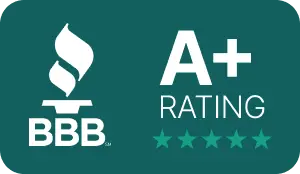When a loved one dies, the estate can take one of two very different paths. A well-funded, correctly drafted living trust glides through administration with minimal court involvement, while assets that never made it into the trust slog through full probate—complete with publication notices, mandatory waiting periods, and mounting carrying costs. Yet California law provides a third route when the paperwork is “almost” right: the Heggstad petition, named for the celebrated 1993 case Estate of Heggstad. From a probate-funding perspective, understanding this shortcut is crucial because it can shave months—and significant expense—off the timeline that separates heirs from their inheritance.
What the Heggstad Petition Actually Does
In essence, a Heggstad petition asks the probate court to confirm that a specific asset belongs to an existing revocable trust—even though title was never updated before death. The original Heggstad family failed to deed a rental property into the trust; rather than force the asset through probate, the court honored the settlor’s written intention and moved the property under the trust umbrella by judicial order.
Why does this matter to heirs who may be cash-strapped today? Because a successful petition keeps the asset out of formal probate, allowing trustees to sell, refinance, or distribute the property without waiting six to twelve months for the conventional process to unfold. For families facing immediate tax bills, mortgage payments, or urgent repairs, that speed can mean the difference between preserving equity and watching it evaporate.
Qualifying Scenarios: When “Almost” Counts
A Heggstad petition only works when four elements line up:
- Valid Trust Instrument – The trust must exist and be signed with the formalities California law requires.
- Schedule of Assets or Assignment – Somewhere in the trust package—often on Schedule A—the decedent clearly states an intent to place the disputed asset into the trust.
- Asset Identified with Reasonable Specificity – “My primary residence at 123 Maple Street” satisfies the standard; “any real property I might own” usually does not.
- No Contrary Evidence – If beneficiaries produce documents showing the decedent deliberately excluded the asset, the court will likely order full probate.
When those boxes are ticked, a Heggstad petition can turn a potential courtroom marathon into a procedural sprint. That efficiency becomes especially attractive once you factor in the court filing fees that pile up during a year-long probate.
Procedural Nuts and Bolts
Although streamlined, the petition still follows familiar probate mechanics: file a verified petition, serve notice to interested parties, and secure a hearing date. Most courts demand a supporting declaration from the drafting attorney or a witness who can attest to the settlor’s intent. If real property is involved, attach a copy of the deed and the unsigned (or “unsigned by the trustee”) trust transfer deed.
Expect the clerk to assign a hearing four to six weeks out. At that appearance, the judge will verify notice, confirm no objections have surfaced, and—if satisfied—sign an order transferring title into the trust. Our funding team coaches heirs to treat this calendar call like any other appearance inside a probate court hearing: arrive early, dress professionally, and bring extra copies of every exhibit.
Cost-Benefit Analysis—And the Role of Funding
Even the streamlined route is not free. Petition filing fees hover around $465 in most California counties, publication may be required if the clerk insists on broader notice, and counsel will bill for research and briefing. Still, those costs pale beside the full probate price tag—especially for mid-sized estates where statutory attorney compensation can claim thousands of dollars.
When liquidity is tight, a probate advance bridges the gap. We routinely fund heirs to cover attorney retainers, appraisal fees, and secured property taxes so the family can pivot quickly. The advance is non-recourse; if the petition fails and the estate ultimately nets less than expected, repayment adjusts accordingly.
Common Roadblocks—and How to Navigate Them
Conflicting Beneficiaries. A disinherited child may challenge the petition, arguing the asset should pass under intestacy rules instead. Once objections fly, the case edges into probate litigation territory. At that point, mediation or a targeted loan to finance expert testimony may prevent a years-long courtroom standoff.
Uncooperative Trustees. Occasionally, the named successor drags their feet, refusing to file because they feel intimidated by the process or harbor personal grievances. Delay can bleed value—think lapsed insurance or vandalized rental units. California beneficiaries have standing to step in when an executor (or trustee) fails to act, and our company often fronts the cash to mount that replacement petition.
Record Deficiencies. Missing trust schedules or illegible deeds derail many Heggstad efforts. Before filing, invest in a thorough title search and, if possible, secure a declaration from the estate-planning attorney confirming the decedent’s intent. The upfront expense is minor compared to restarting after a denial.
Strategic Timing: File Early, Save More
If real estate carries a mortgage, every extra month of probate erodes equity through interest, insurance, and HOA dues. Filing the Heggstad petition within weeks of death limits those losses. Compare that to waiting months to petition the court to open probate: the traditional path may force the estate to shoulder two rounds of publication fees, multiple bond premiums, and extended creditor notice periods.
From a funding standpoint, early action translates into smaller advance amounts and lower payoff balances—a win for both heirs and our risk profile.
Drafting Tips to Avoid Future Headaches
While our focus is funding, we see enough blown petitions to spot repeat pitfalls. Share these pointers with counsel drafting or amending a living trust:
- Update Schedules Annually. A simple habit—revising Schedule A when major assets are acquired—can eliminate the need for court intervention entirely.
- Use Fully Executed Transfer Deeds. Recording now is cheaper than litigating later.
- Spell Out Intent in Plain Language. “All bank accounts I hold, wherever located,” leaves no wiggle room.
- Keep Originals Together. A scattered trust binder invites missing-document challenges.
Good drafting may cost a little more upfront, but it saves heirs from calling a funding company for help two decades later.
Funding Solutions Tailored to Heggstad Cases
Because Heggstad petitions resolve faster than full probate, our advances typically carry shorter expected durations and therefore accrue lower absolute fees. We can structure draws in stages—initial funds for the filing fee, a second tranche if objections arise, and a final advance should the court order bond coverage. Flexibility lets heirs keep the lights on without over-borrowing.
Importantly, we secure repayment solely from the heir’s distribution, never from personal credit or wages. If the petition fails and property proceeds trickle through a contested probate, payoff automatically adjusts. That alignment of risk keeps everyone rowing in the same direction: toward a confirmed trust asset and a timely distribution.
Final Thoughts—Efficiency, Equity, and Peace of Mind
A Heggstad petition is the probate equivalent of fixing a missing shingle before the roof leaks. Addressed quickly, the oversight is a minor inconvenience; ignored, it can flood the estate with needless cost and delay. For heirs juggling funeral bills, mortgage statements, and everyday living expenses, speed is not a luxury but a necessity.
Our mission as a probate-funding partner is to turn legal strategies—like the Heggstad shortcut—into financial realities. By advancing the funds families need to file, fight, and finalize their petitions, we help them preserve the equity their loved ones intended and move forward with confidence.








